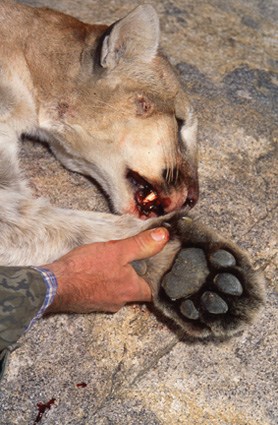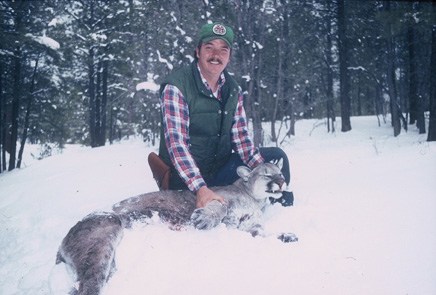With the recent mountain lion attack in Washington state where one cyclist was wounded and the other killed, we thought readers might be reconsidering what it takes to be a mountain lion hunter. Or maybe you've hunted these animals before, but it's been a long time ago.
Even more, knowing how to hunt a certain species also uncovers the habits, habitat and biological make-up of the species. You have to know an animal and its patterns to get within range of your target. So these 10 mountain lion hunting tips offer some insight into what went wrong with the mountain lion involved in the attack on the two, Washington state cyclists. It’s worth mentioning that mountain lion attacks are rare. There had not a mountain lion attack in Washington state in 100 years. — Amy Hatfield
1) Habits and habitats.
Learn as much as you can about lion habits and habitat. Some game-management agencies publish lion studies full of local information and Predator Xtreme offers great content on where to get started and how to be successful. Start with this, this and this article.
2) Lion are flesh and blood creatures . . . not ghosts.
As such, they leave signs that document their travel. Look for tracks in snow, mud, sand washes or game trails and dirt roads. Look for a roundish track showing no claw marks, four toes and a distinctive heel pad that is bi-lobed at the front and tri-lobed at the rear. Tracks left by adult lions will range from 3 to 4 inches.
3) Savvy lion hunters know scat.
Lion offal, unlike bobcat scat, is not segmented. Their scat most often shows deer hair, but may contain hair from elk, antelope, javelina, big horn sheep and other ungulates. Lion will also eat domestic animals, rabbits, hares, beaver and even porcupines. Big lion will sometimes kill and consume smaller or weaker lion. Bobcat can be a tasty treat.
4) Urine sign.
Lion frequently scrape grass and ground debris (limbs, twigs and weeds) into mounds and urinate on such to mark a territory. Trespassing lion will be killed and eaten – or vice versa.
5) Burial and markings.
Lion will likewise scrape ground debris over a major kill and flavor such with urine. Lion will lay up somewhat close and return to feed on the kill until it is consumed or until the meat spoils. Finding a covered kill usually indicates a lion presence close by and increases the chance of success. (In the case of the Washington State attack, the mountain lion was found standing on top of the cyclist's body. The body had been removed from the scene of the attack and relocated to a nearby area where it was partially buried beneath a log.)
6) Language.
Lion articulate growls, snarls, whistles, purrs and moany groans. The latter can be most useful to the hunter. Groans are most often used during the week or so when a female lion enters estrous. Both male and female lion use the groan as a locater device. Some researchers are convinced female lion enter estrous most often during the spring with the one to six cubs being born during the summer. Female lion that escape impregnation will enter estrous about every two months, year-round. Using the moany-mating grown mixed with distress calls can encourage success.
7) Cold calling to lion is difficult, but not impossible.
Look for concentrations of mule deer and whitetail. Within the Southwest, javelina is a favored prey. Brushy canyon country can be dandy. The Kitsmiller lion was killed within transition woodlands (pinion & juniper), a favored wintering area for mule deer and elk.
8) Preferred calls.
I have called lion using mouth calls (both metal reed and plastic reed) but prefer the plastic as a cold weather call because it resists freezing. Plastic-reed calls, in my opinion, offer more versatility.
9) Digital calls.
I have called lion using a battery-powered player of my own design or using e-calls. Many digital game call manufacturers offer a generous selection of distress sounds and lion-articulation sounds.
10) With the proper hit, any of the centerfires will get the job done.
My favored gun for lion calling is a .25-06 shooting 120-grain soft points. I prefer stouter calibers because the country I hunt also contains bear. I would rather go against a bear with a .25-06 than with a .17, even though I know the .25-06 is marginally adequate for a thick skinned blackie.
Featured Photo: iStock








